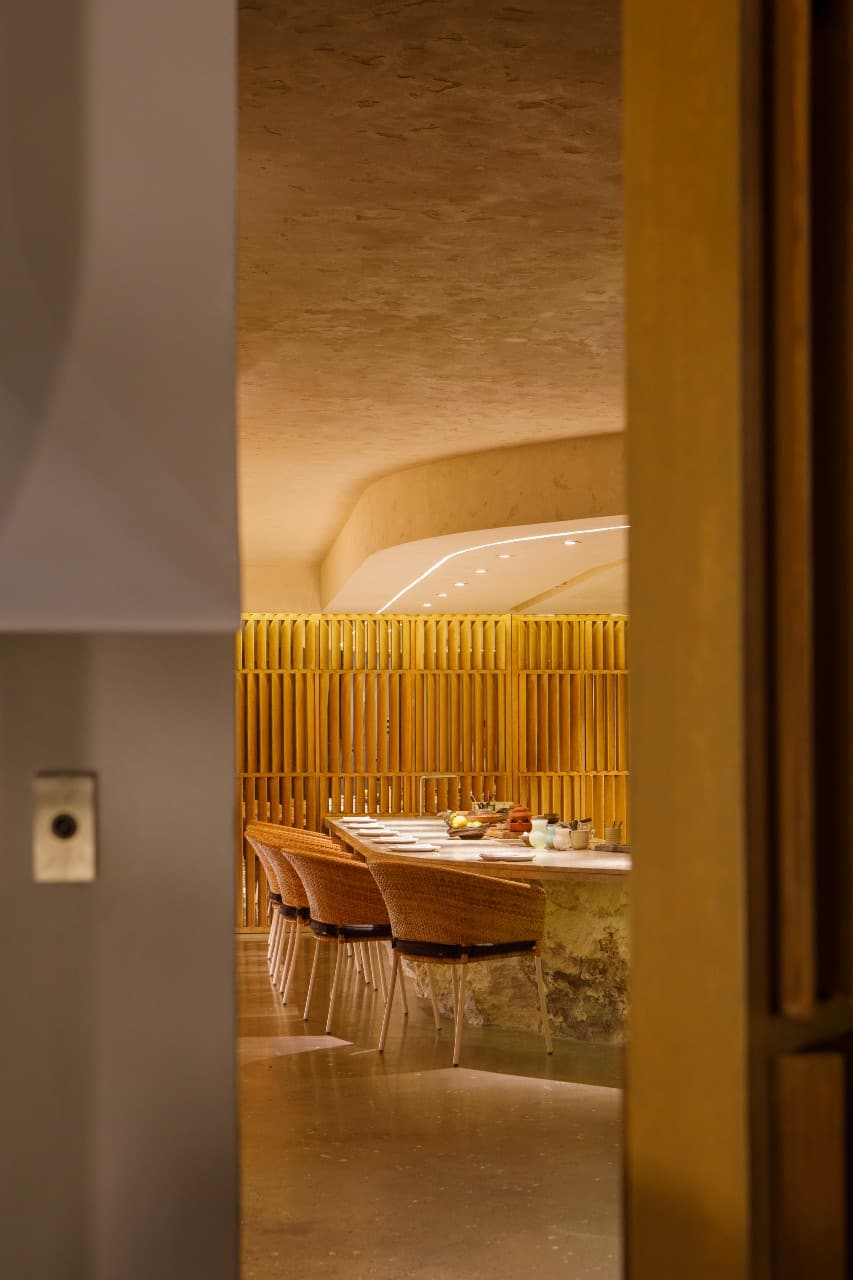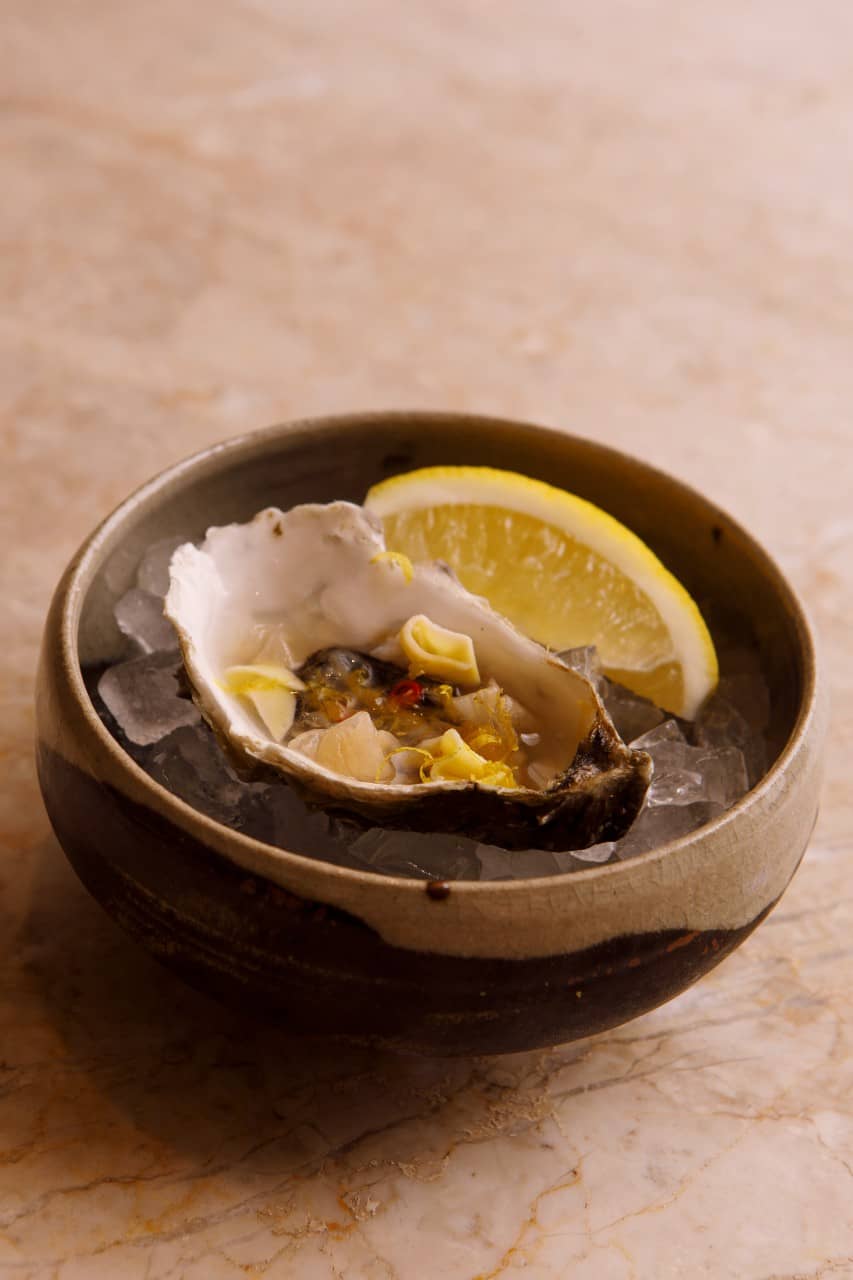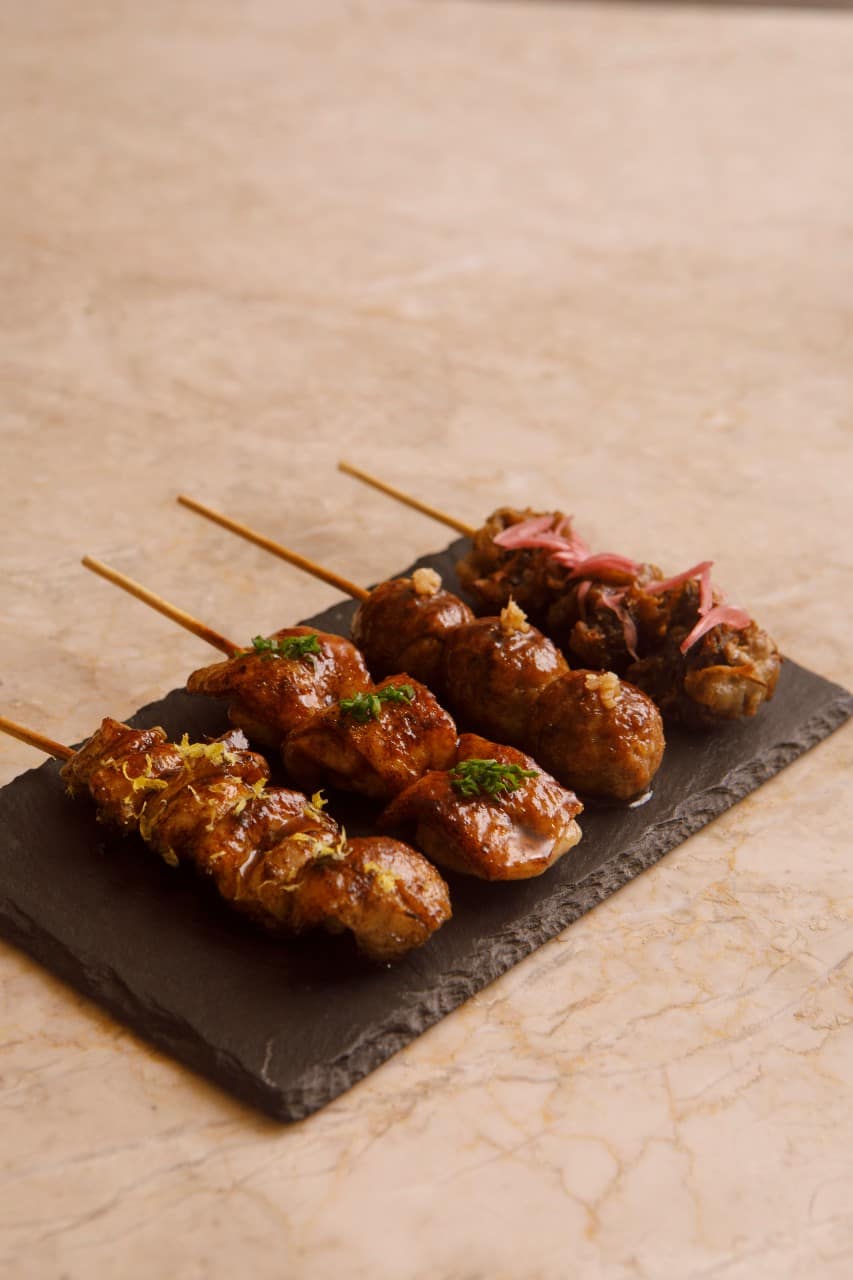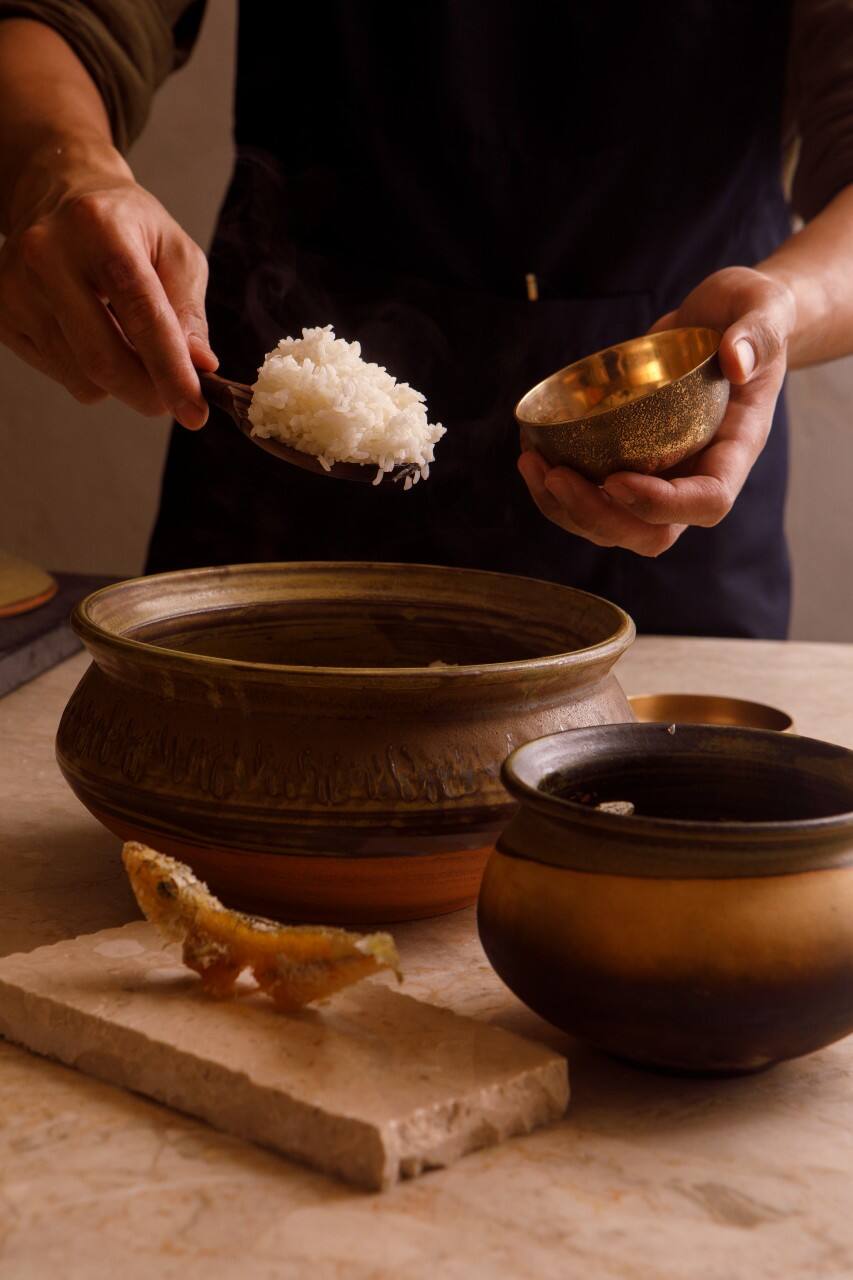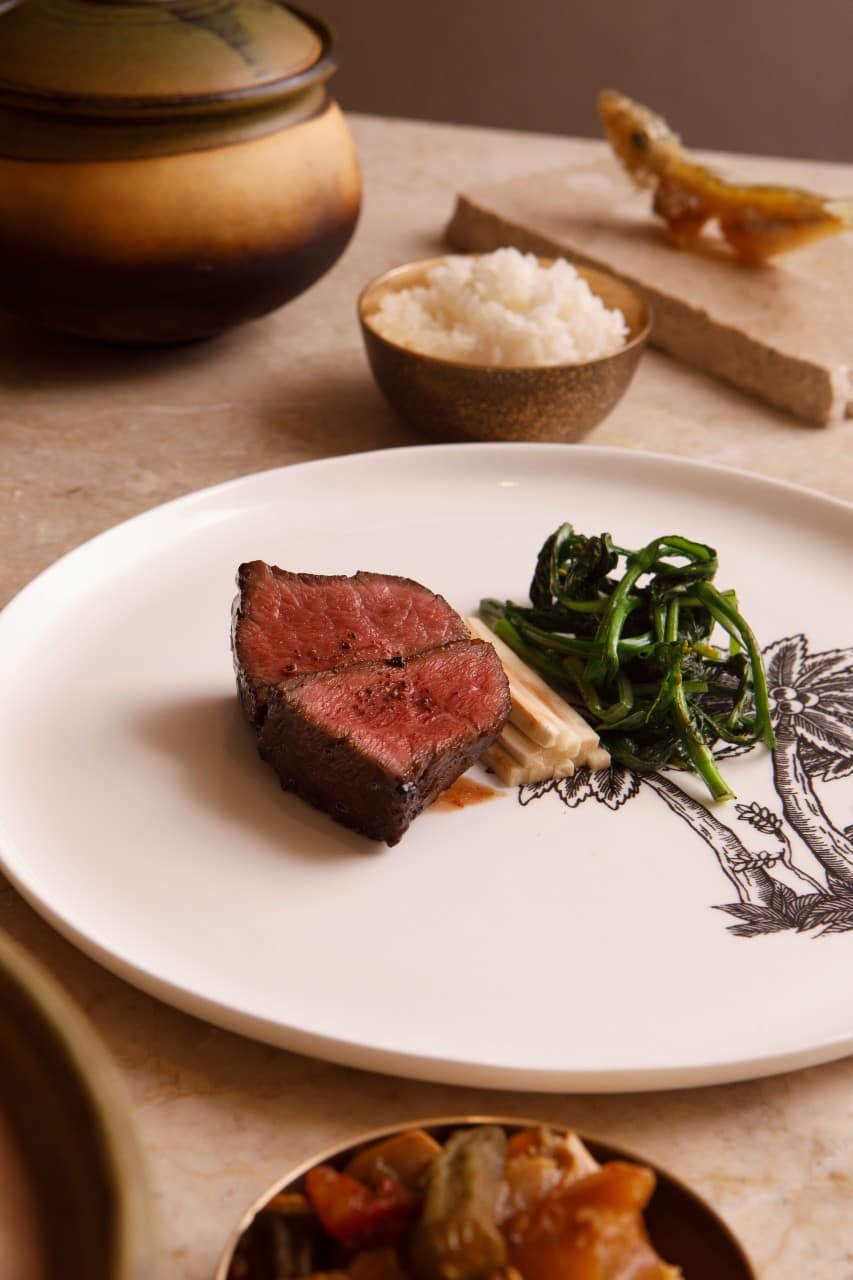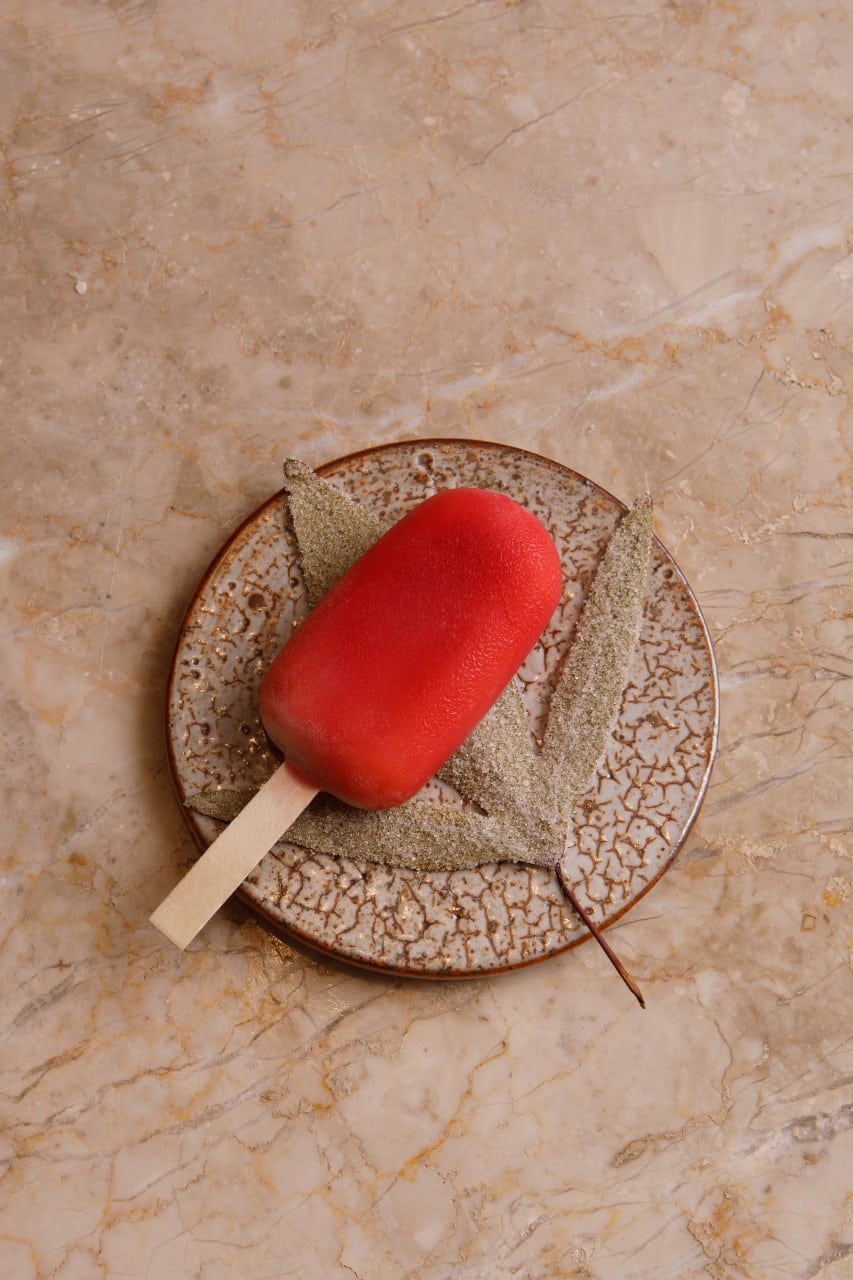

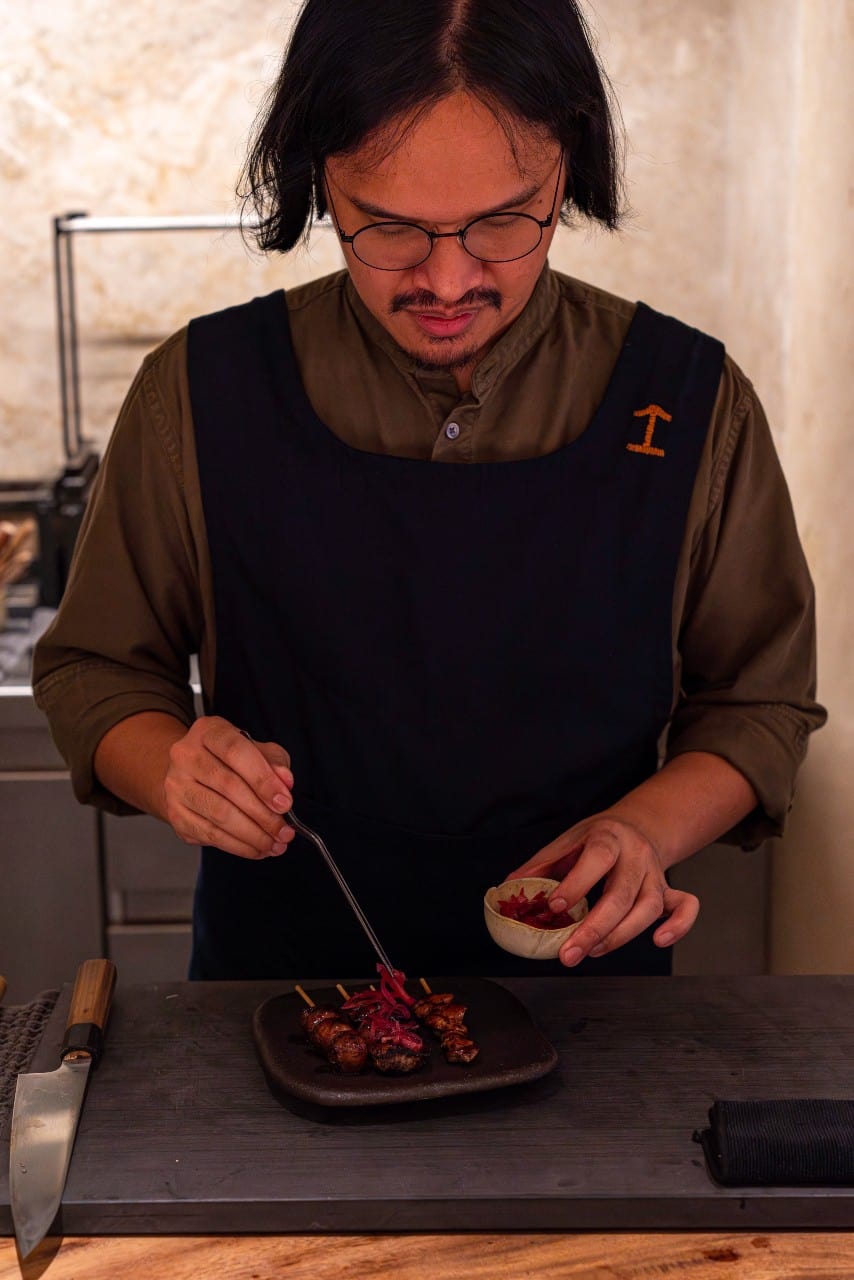

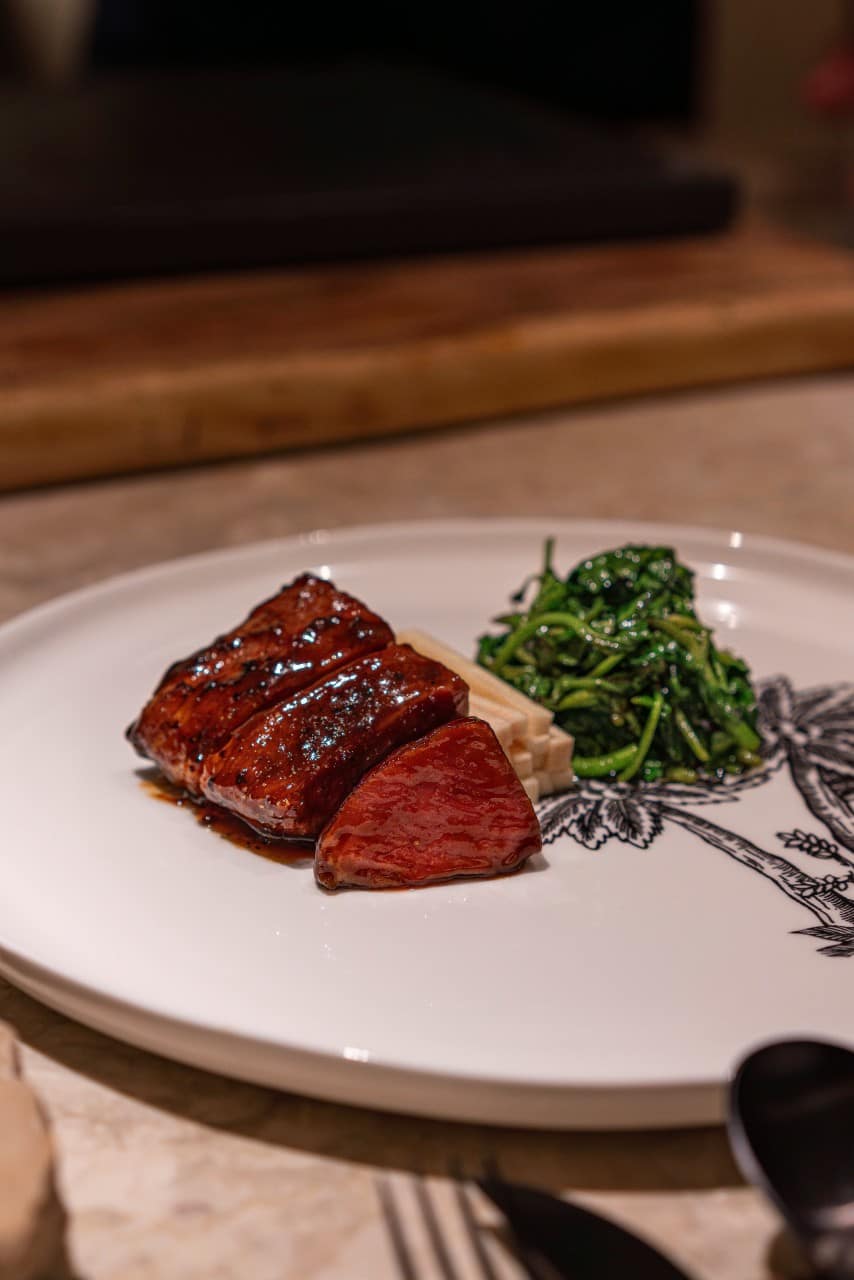

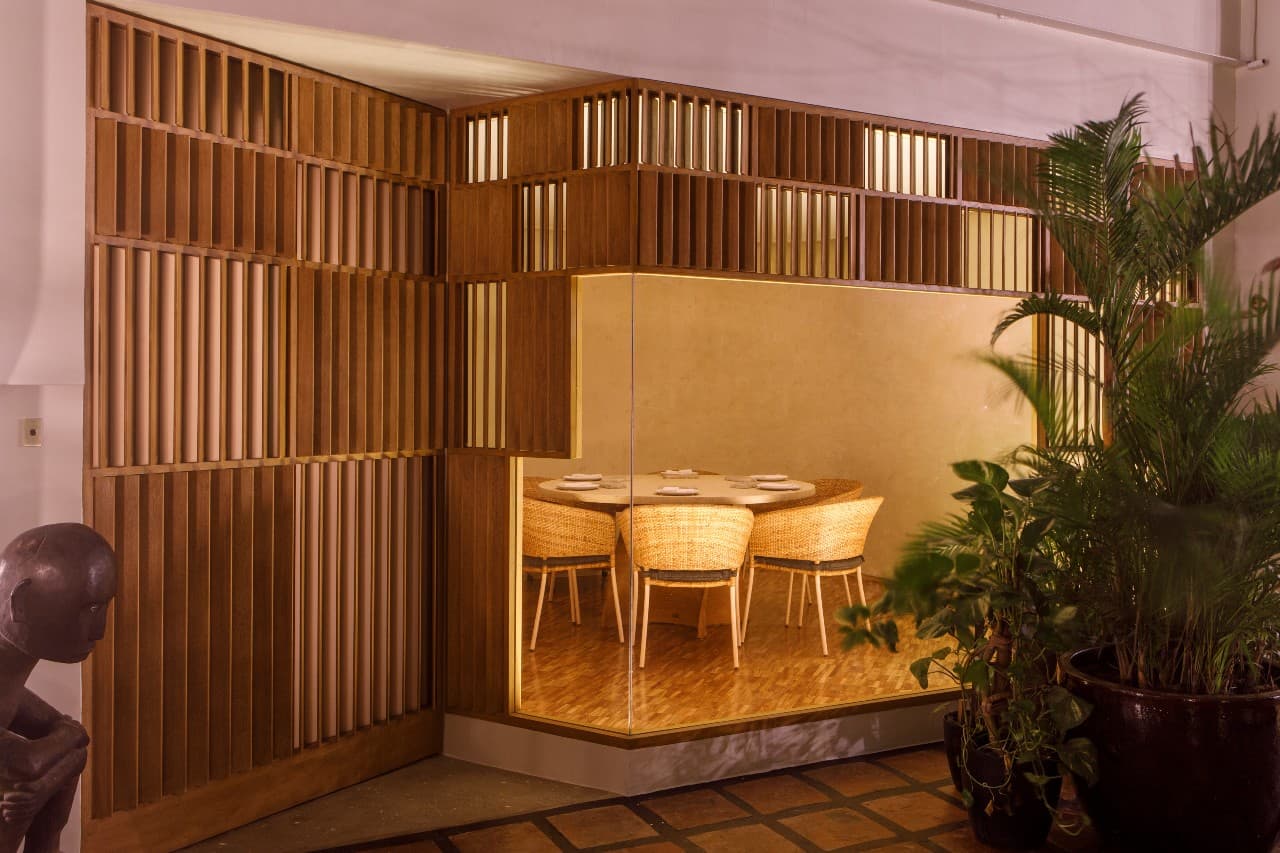

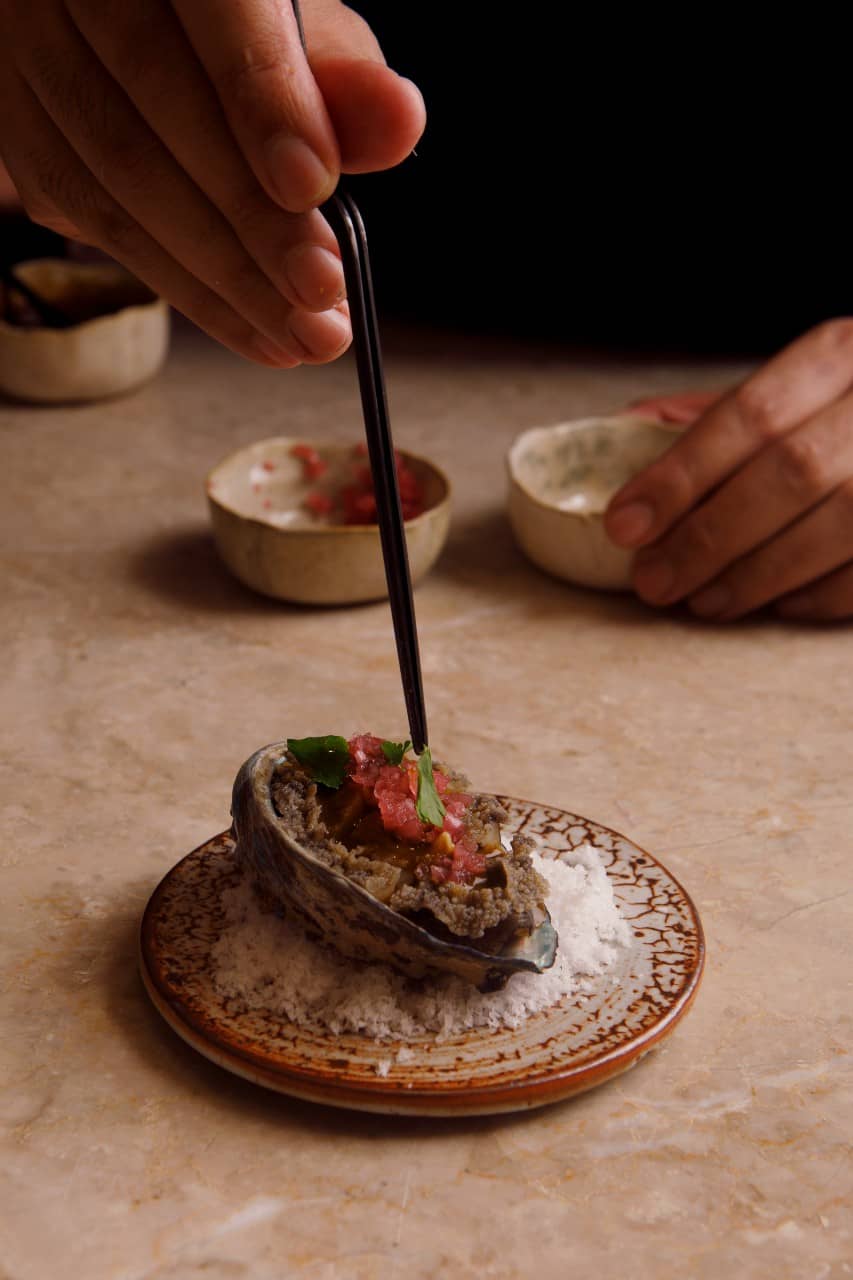
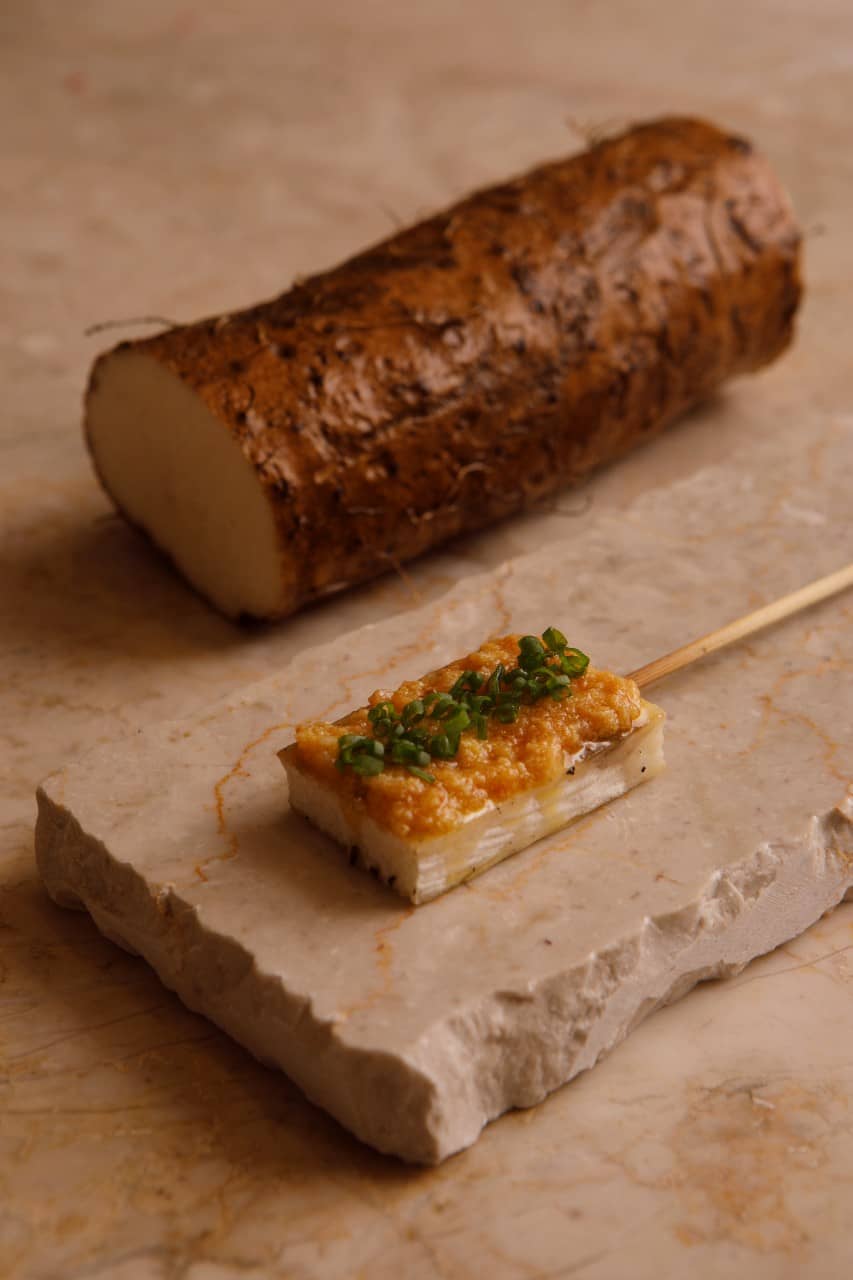


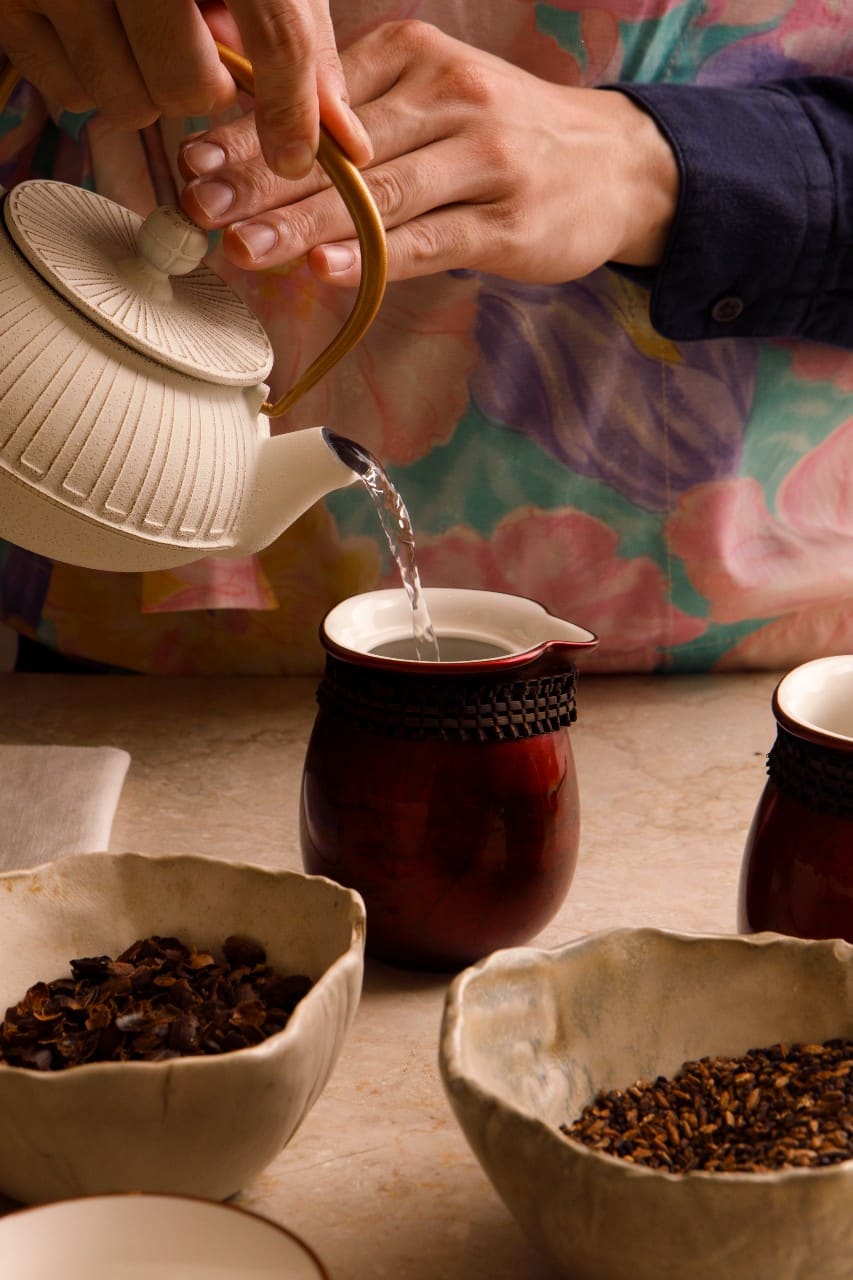

The main dining area as seen from the front door. - Only a handful of people (eight, to be exact) get the privilege of experiencing Chef Jepe's food every night.Inatô
Chef Jepe Cruz - The chef and his team will prepare your meal right in front of you. Here he's plating various chicken skewers from the 'Bilang' section of the menu.Ching Dee
Attention to detail - Each skewer is treated with utmost attention, from raising organic chickens to prepping and cooking, to plating. The result is an exquisite dish, with meat so tender and flavorful, while the pickled toppings give each bite a pop.Ching Dee
Pork that mimics steak - If you didn't know this was pork, you'd think you were eating prime steak. The distinctive meat from the Iberian Black Pig was juicy, tender, even subtly sweet. The thoughtful addition of acidity from the pickled ubod and savoriness from the sautéed greens enhances this slight sweetness.Ching Dee
Papsi - As funny as its name is (short for popsicle), Papsi means serious business. When eaten at the right time, it can conclude your meal on a refreshing note; or signal the beginning of another set of grilled splendor from the 'Bilang' section.Ching Dee
Private dining - The private dining area, though displayed to the public through the floor-to-ceiling window, still gives a sense of enclosure to a small group of curious diners. Inatô





